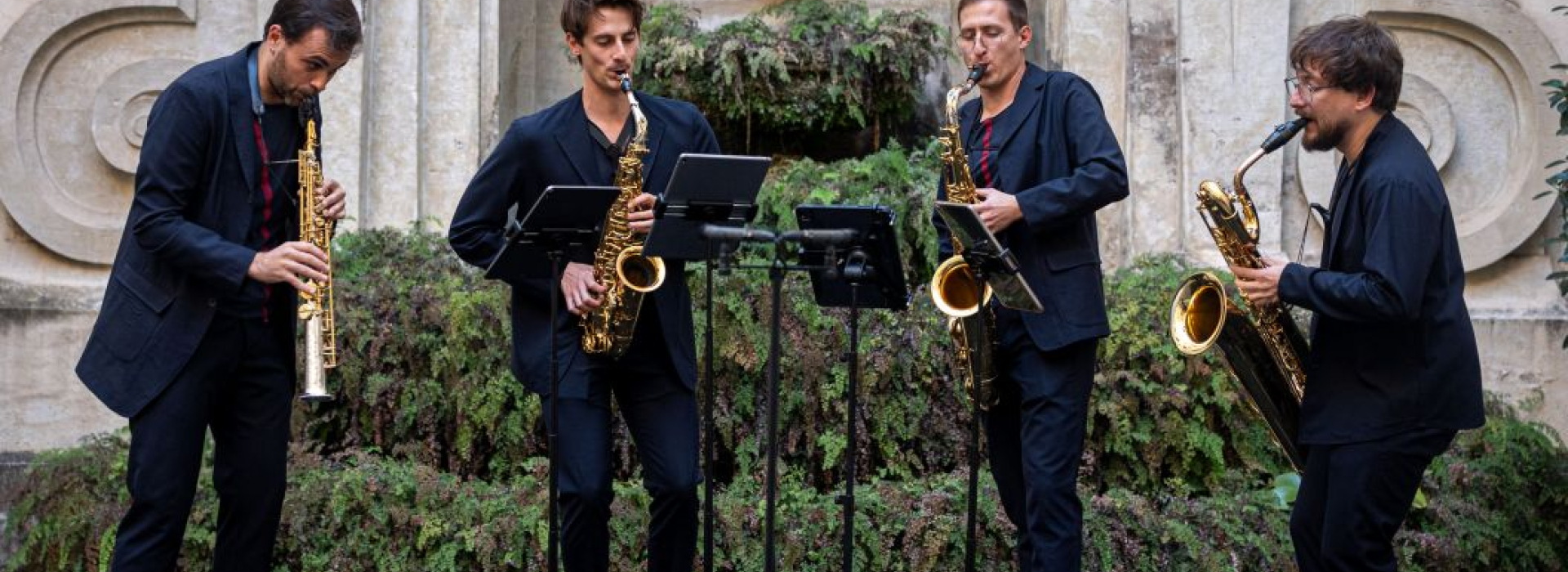A VERY SPECIAL OPENING

This afternoon, the Palazzo di Spagna hosted the opening of the special edition of the Perelada Festival in Rome, organised to mark the Millenium of Montserrat, as a prelude to the festival's 40th anniversary and coinciding with the Jubilee Year. The evening featured two concerts that showcased a dialogue between tradition and modernity, between memory and creation, through the talent of two leading Catalan ensembles.
Considered the oldest permanent diplomatic mission in the world, the Spanish Embassy to the Holy See and the Order of Malta was created in 1480 by Ferdinand the Catholic and has been based in the Palazzo di Spagna since 1654. This historic building, with more than 400 years of history, still houses rooms with works from the Prado Museum and sculptures by Bernini. It is a true corner of history and art in the heart of the Piazza di Spagna, which takes its name from the embassy.
The event was attended by distinguished institutional and religious figures, among them Ms. Isabel Celaá, Ambassador of Spain to the Holy See; Mr. Salvador Illa, President of the Government of Catalonia; Mr. Ramon Espadaler, Minister of Justice and Religious Affairs of the Catalan Government; Father Manel Gasch i Hurios, Abbot of Montserrat; Father Bernat Juliol, Commissioner of the Millennium of Montserrat; Mr. Miquel Brugat, Mayor of Peralada; Mr. Eduardo Aznar, Consul General of Spain in Rome; Father Ignasi M. Fossas, President Abbot of the Subiaco Cassinese Benedictine Congregation OSB, as well as representatives of the Embassy of Spain in Italy and of the Sovereign Military Order of Malta.
At half past five in the afternoon, the Kebyart saxophone quartet surprised both guests and passers-by in the square with a fanfare performed from one of the balconies of the Palazzo di Spagna, serving as a festive prelude to the evening. Once inside the embassy, the group opened the session with La Grande Bellezza, a programme designed as a musical journey through the memory and artistic identity of Rome and its cultural legacy. With their version of Stravinsky's Pulcinella Suite, Kebyart reimagined the polyphony and forms of the past transforming them into new textures full of vitality and building a bridge between tradition and modernity. At the centre of the programme, Ay luna que reluces, commissioned by Bernat Vivancos, reinterpreted an anonymous 16th-century Christmas carol from the Songbook of the Duke of Calàbria, as a contemporary song about beauty and memory. The idiomatic and expressive use of the saxophone created a dialogue between past and present. The finale, with music by Nino Rota for Fellini's Otto e mezzo evoked the power of memory in artistic creation, transferring the spirit of Italian cinema into the chamber-music language of the quartet. A programme that blended creative arrangements and a commitment to new music, it clearly shows Kebyart's aesthetic philosophy—and earned the group a long and enthusiastic ovation from the audience.
Afterwards, the Palafrenero Hall of the Palazzo di Spagna hosted the Corelliana concert, performed by the Catalan Baroque orchestra Vespres d’Arnadí, conducted by Dani Espasa, with Farran Sylvan James as concertmaster. Before an audience of 120 people who filled the hall, the resident ensemble of the Easter edition of the Perelada Festival offered a musical journey through the concerto grosso form, a genre born in Rome that epitomises the constant dialogue between soloists and orchestra, and the passions typical of the Baroque.
The programme was conceived as a tribute to Arcangelo Corelli (1653-1717), a violinist and composer central to the development of instrumental baroque and one of the most important figures in Roman music, known above all for his sonatas and concerti grossi. The concert opened with Concerto grosso Op. 6 No. 11, an example of his sobriety and refined symmetry. It was followed by the lyrical expressiveness of Alessandro Scarlatti's Concerto grosso núm. 5 (1740). Placing the two composers side by side, both members of the Accademia dell’Arcadia, allowed the stylistic variety of Baroque Rome to be heard. The third stage of the journey featured Georg Frideric Händel. After arriving in Rome in 1707, “il caro sassone” featured Corelli as a solo violinist in his oratorios. His influence was felt in the Concerto grosso Op. 6 No. 1 (1739), a brilliant piece that combines textures of concertino and ripieno while reusing musical material from other works, as was customary at the time. The evening closed with Concerto grosso no. 12 on “Follia” by Francesco Geminiani (1729), a vibrant tribute to Corelli's Sonata Op. 5 No. 12. With a group of soloists in place of the original solo violin, Geminiani transformed the piece into a final explosion of virtuosity and vitality.
With Corelliana, Vespres d'Arnadí offered an enthusiastic audience an immersive experience in the European Baroque, where passions and contrasts—hallmarks of the period's music—were expressed in all their intensity.
The day made clear the aim of this special edition: to build bridges between memory and creation, between tradition and modernity. A splendid opening that forges a musical path between Catalonia and the Italian capital.
Two Centuries of Catalan Music in Dialogue: Terradellas and Vivancos
Tomorrow, 2 October, the Perelada Festival programme in Rome will continue at the Royal Academy of Spain with the conference Millenary Montserrat: from Terradellas to Vivancos , given by Father Jordi-A. Piqué, monk of Montserrat and prior of Montecassino, together with musician and musicologist Sergi Casademunt i Fiol, and composer Bernat Vivancos . A reflection on musical continuity between generations, the Benedictine tradition and the creative spirit. In the afternoon, the church of San Pietro in Montorio will host the concert Terradellas in the Eternal City, dedicated to the composer Domènec Terradellas (1713-1751), one of the key figures of the European Baroque. The concert will feature soprano Sara Blanch, the vocal group Cantoría and the Vespres d'Arnadí orchestra under the musical direction of Dani Espasa.